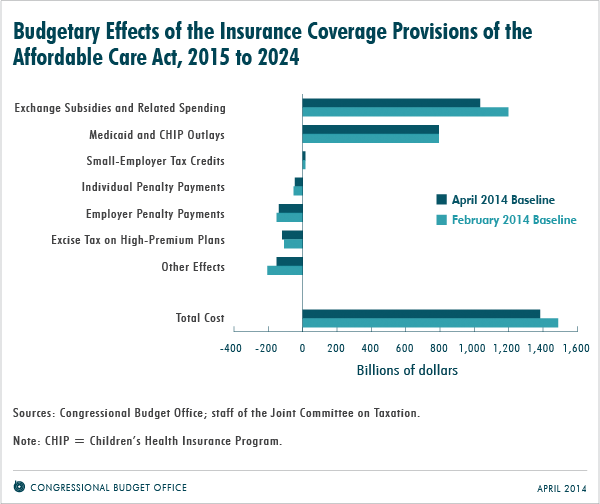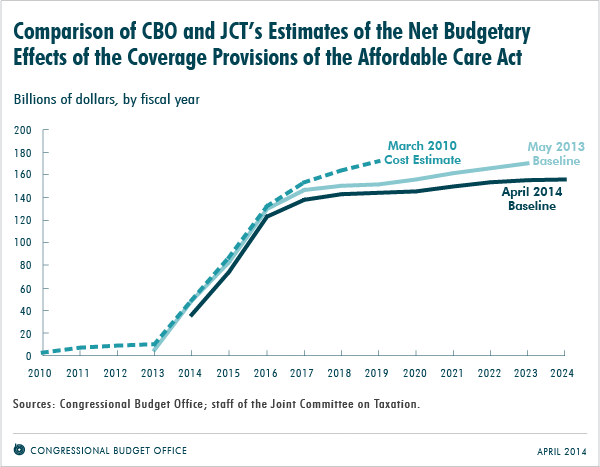Affordable Care Act Will Cost Less Than Projected, Cover 12 Million Uninsured People This Year
Washington, DC–(ENEWSPF)–April 14, 2014. CBO and the staff of the Joint Committee on Taxation (JCT) have updated their estimates of the budgetary effects of the provisions of the Affordable Care Act (ACA) that relate to health insurance coverage. The new estimates, which are included in CBO’s latest baseline projections, reflect CBO’s most recent economic forecast, account for administrative actions taken and regulations issued through March 2014, and incorporate new data and various modeling updates.
Relative to their previous projections made in February 2014, CBO and JCT now estimate that the ACA’s coverage provisions will result in lower net costs to the federal government: The agencies currently project a net cost of $36 billion for 2014, $5 billion less than the previous projection for the year; and $1,383 billion for the 2015–2024 period, $104 billion less than the previous projections (see the figure below).

The estimates of the net costs for 2014 stem almost entirely from spending for subsidies that are to be provided through insurance exchanges (often called marketplaces) and from an increase in spending for Medicaid. For the 2015–2024 period, the projected net costs consist of the following:
Gross costs of $1,839 billion for subsidies and related spending for insurance obtained through the exchanges, Medicaid, the Children’s Health Insurance Program (CHIP), and tax credits for small employers ($165 billion less than the previous projection); and
A partial offset of $456 billion in receipts from penalty payments, additional revenues resulting from the excise tax on high-premium insurance plans, and the effects on income and payroll tax revenues and associated outlays arising from projected changes in employer coverage ($61 billion less than the previous projection).
Those estimates address only the insurance coverage provisions of the ACA; they do not constitute all of the act’s budgetary effects. Many other provisions, on net, are projected to reduce budget deficits. Considering all of the provisions—including the coverage provisions—CBO and JCT estimated in July 2012 (their most recent comprehensive estimates) that the ACA’s overall effect would be to reduce federal deficits.
CBO and JCT have updated their baseline estimates of the budgetary effects of the ACA’s insurance coverage provisions many times since that legislation was enacted in March 2010. As time has passed, the period spanned by the estimates has changed. But a year-by-year comparison shows that CBO and JCT’s estimates of the net budgetary impact of the ACA’s insurance coverage provisions have decreased, on balance, over the past four years (see the figure below). That net downward revision is attributable to many factors, including changes in law, revisions to CBO’s economic projections, judicial decisions, administrative actions, new data, numerous improvements in CBO and JCT’s modeling, and lower projected health care costs for both the federal government and the private sector.

Source: cbo.gov








